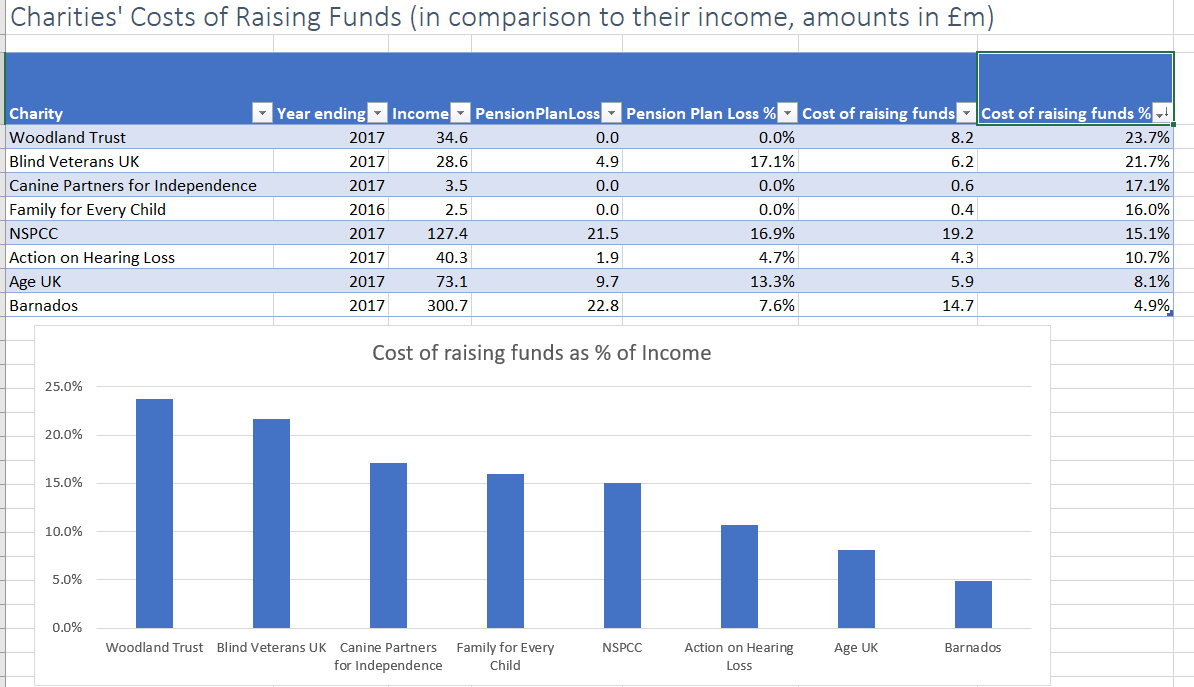I had occasion to look through the recent accounts of a sample of UK charities yesterday and was quite surprised to find that:
- some charities (e.g. Blind Veterans UK and NSPCC) still seem to be exposed to significant financial risk from their defined benefit (DB) pension plans. (See the chart above – the three charities at the end don’t seem to have DB pension plans or have immunised themselves against this risk).
- the cost of raising funds seems to vary quite a lot across the charities I looked at, ranging from almost a quarter (24%) of income (Woodland Trust), to about a fifth of that (5%, Barnados). (See chart below).

These differences are somewhat surprising.
Some caveats: I am not an accountant, and have not had time to read through the detailed notes provided by the charities. This is also only a small sample of charities. The published accounts of the different charities may not be directly comparable (if so I think they should be, because otherwise the relevant accounting standards currently make it very difficult to assess which charities are being efficient or avoiding unnecessary risk and which ones are not). Some causes (e.g. helping children) may be more appealing to the public than others (e.g. helping preserve woodland) and so require less advertising to raise funds. All the same, it seems surprising that the NSPCC (which also scores rather badly on its exposure to pension plan risk) should need to spend about 3 times as much on fund raising as Barnados does. (Again, if the figures are not comparable, then compliance with relevant accounting standards should mean that they are comparable, in my opinion).
I hope to return to this topic when time permits – but in the meantime, as ever, comments are most welcome.

